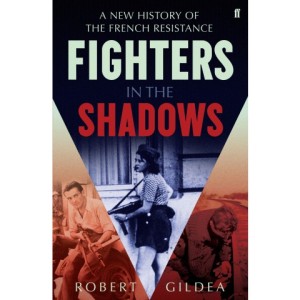 Date & Place: Monday 4 January, in the Wolfson Room NB02, IHR Basement, North block, Senate House
Date & Place: Monday 4 January, in the Wolfson Room NB02, IHR Basement, North block, Senate House
Speakers: Robert Gildea (Oxford)
Paper Title: ‘The French Resistance: Myth, Memory and Narrative’
Chair: Iain Stewart (UCL)
Click HERE to listen to an mp3 recording of the paper (right click to save).
Robert Gildea introduced the ideas of his new book to a packed early January audience at the IHR. His paper focussed on three important strands in how we talk about resistance in France during the Second World War; these were the titular themes of myth, memory, and narrative.
When describing the “battle of myths” that surrounds the history of resistance, Gildea began by stressing that the word myth did not imply fiction, but rather a constructed narrative. As the field has matured, we have increasingly contextualised and problematized the “military, male, and national” myth constructed by Gaullists during and after the Liberation.[1] This was a myth formalised in the commemoration of resistance that took place in public rituals, and especially in the awarding of medals by the state. Overwhelmingly, it was serving military personnel and Free French adherents who were decorated, and the spread of medals downplayed the importance of other types of resistance. Foreigners, Communists, and Jews were all marginalised in this commemoration, which depicted the ideal character of the resistance to be held in the mind of the French public. This proved remarkably resilient, even in the face of the wave of challenges in the 1960s and beyond. Yet, it did not survive untouched, and the importance of myth is that it is adaptable in its transmission. By the time that Chirac’s delineation of “the irreparable and the righteous” sought to reinforce some aspects of the original myth, the constructed narrative had become decidedly more humanitarian, more female, and more ecumenical.
When looking at the memories that shaped these myths, Gildea focussed on the mosaic of different viewpoints that could be found to offer a corrective. He outlined the different memories he attempted to foreground in Fighters in the Shadows.[2] Tracing threads of memory from Communists, foreign resisters, and Jewish resisters, Gildea showed how the constructed narrative of the post-war consensus had been challenged by subsequent writing. He further stressed the important recognition of women’s resistance, and the wave of texts which have demonstrated how often women served as “hinges in the resistance”. Likewise, the importance of indigenous soldiers was the focus of increasing historical analysis, he stated, highlighting important new works that stress the role of African troops, and deconstruct the legacy of the blanchiment of winter 1944.
In showing how these memories could feed into myths, Gildea next stressed the importance of narrative. By studying how stories of resistance were told, we can look more meaningfully into the afterlives of resistance. The interactions between individual memory, group memory, and the dominant narrative provide an instructive sense of how the myth of the nation supplanted the myth of the resistance as a means of controlling and limiting the dynamism of the Liberation.
As an example, Gildea described how Henri Rol-Tanguy had criticised the “arrogance of the Free French” that dominated the post-war narrative, and subsequently established the dominant myth. Yet, Rol-Tanguy’s story, so important as a Communist counter-narrative to the Gaullist orthodoxy, was itself responsible for crowding out the narrative of foreign resisters (in particular the tragic narrative of Joseph Epstein, which survived through its own discreet group memory). By demonstrating how these collective memories acted as hinges between individual stories and dominant narratives, Gildea unpacked how the battle of myths followed the very real battle for France.
By unpicking both established narratives and their competitors, Gildea shows a mosaic of resistant moments that helps shed light on the plurality of movements which liberated France. Yet, in studying the development of their narratives, we can see how these memories were framed and used as a basis for political, national, and personal claims thereafter.
—–
[1] As discussed by Hanna Diamond in the last IHR Seminar
[2] In particular, see this review by Julian Wright in the Times Literary Supplement




One Response